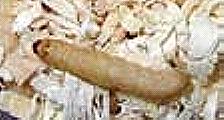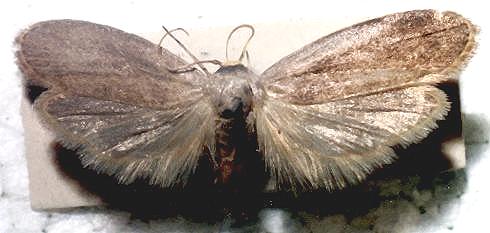
| Lesser Wax Moth (one synonym : Meliphora alveariella Guenée, 1845) GALLERIINAE, PYRALIDAE, PYRALOIDEA | (donherbisonevans@yahoo.com) and Stella Crossley |

(Photo: courtesy of
Unusual Friends)

| Lesser Wax Moth (one synonym : Meliphora alveariella Guenée, 1845) GALLERIINAE, PYRALIDAE, PYRALOIDEA | (donherbisonevans@yahoo.com) and Stella Crossley |

(Photo: courtesy of
Unusual Friends)
The Caterpillars of this moth are an international pest in beehives, feeding on pollen etc., and generally destroying the combs. Their preference is for abandoned hives or hives where the colony is has been weakened. The caterpillars are initially white, but become greyish later, growing to length of about 3 cms.

The moths are unusual, in that besides using pheromones, the males emit ultrasonic whistles in order to attract females. The moths have plain grey-brown forewings, and hindwings that are a dirty white with a silken sheen, and have a fringe on the trailing edges. The moths have a wingspan of about 2 cms.
Attempts to control the pest include :
The species is found all over the world, for example :
and was introduced by unfortunate accident into Australia.
Further reading :
Ian F.B. Common,
Moths of Australia,
Melbourne University Press, 1990, pp. 47, 68, 347.
Johan Christian Fabricius,
Entomologia systematica emendata et aucta,
Tome 3, Part 2 (1794), p. 289,, No. 10.
 caterpillar |  butterflies |  Lepidoptera |  moths |  caterpillar |
(updated 15 November 2011, 29 April 2024)